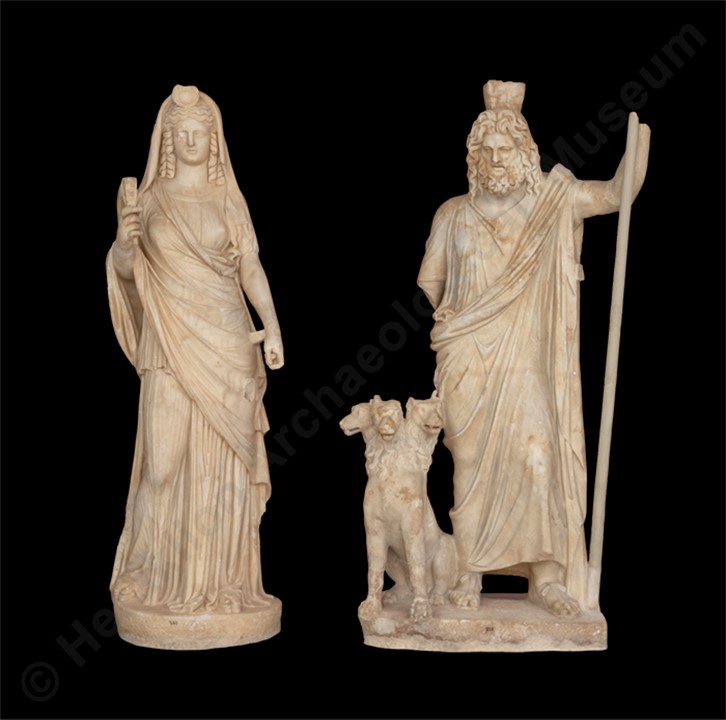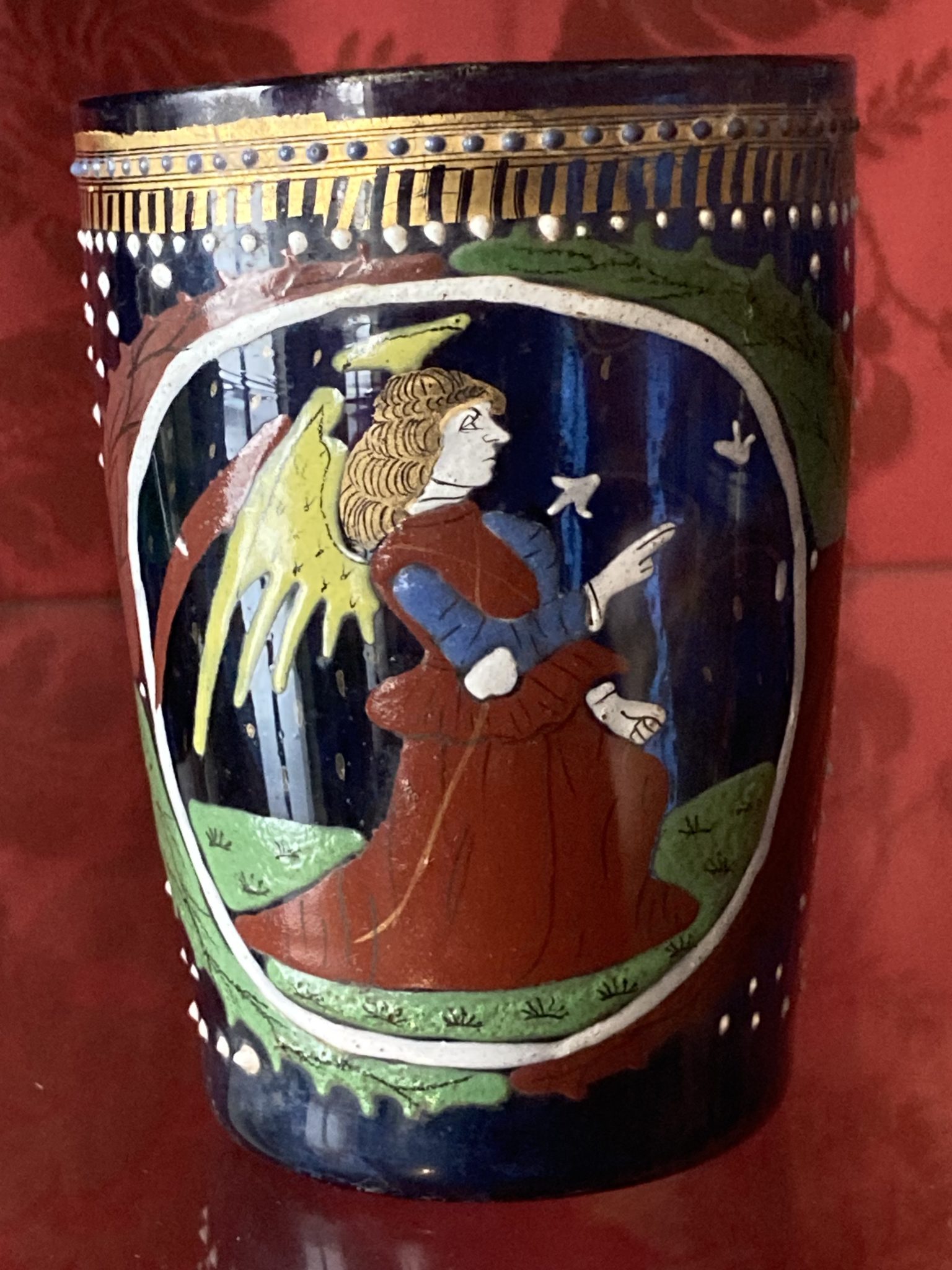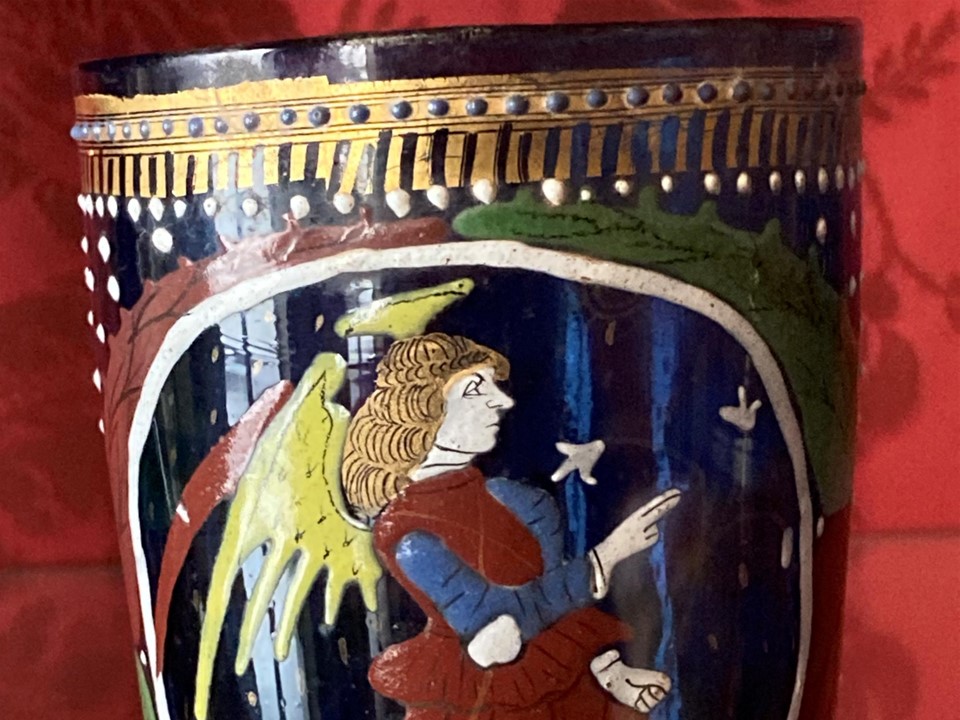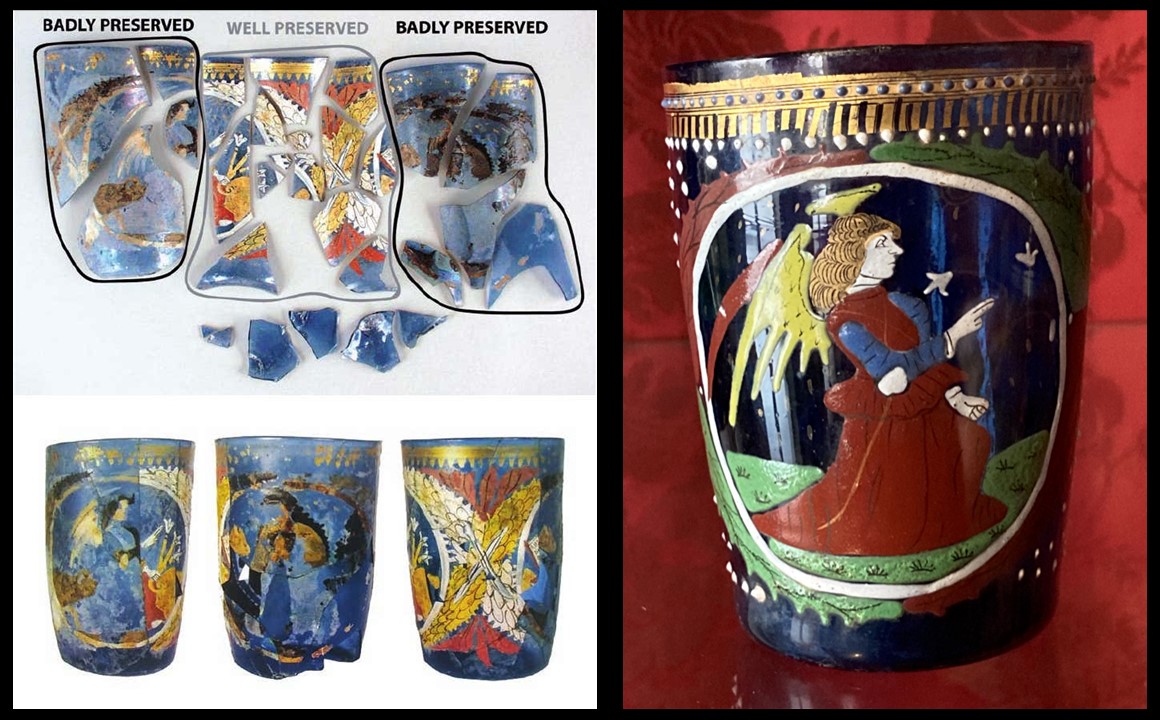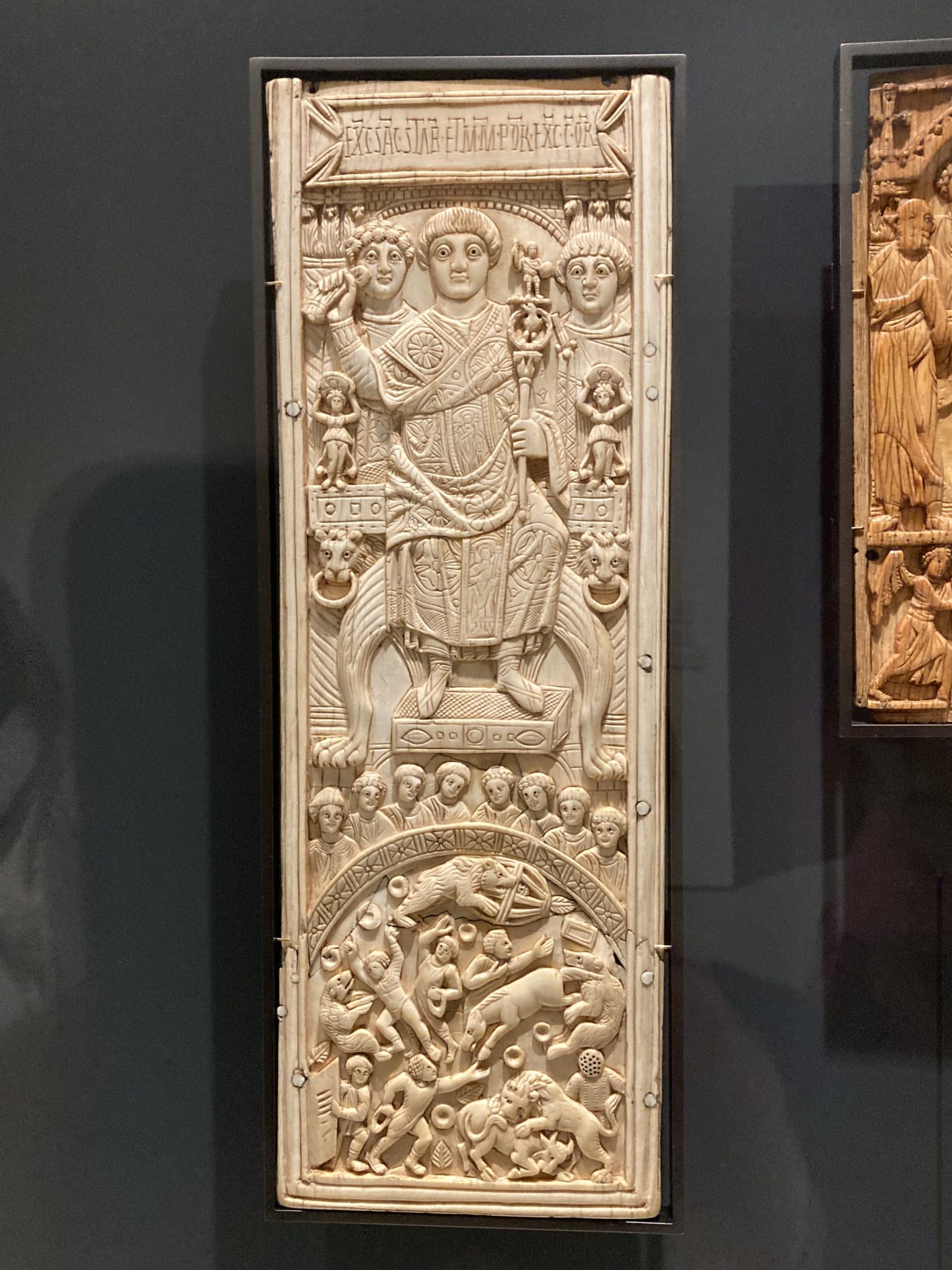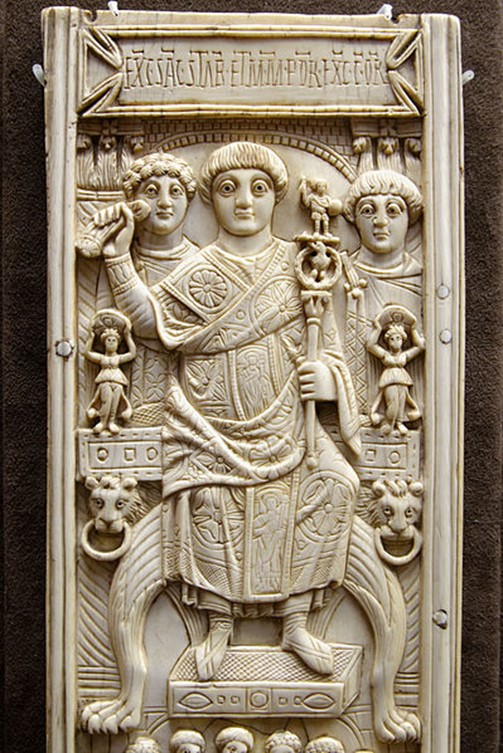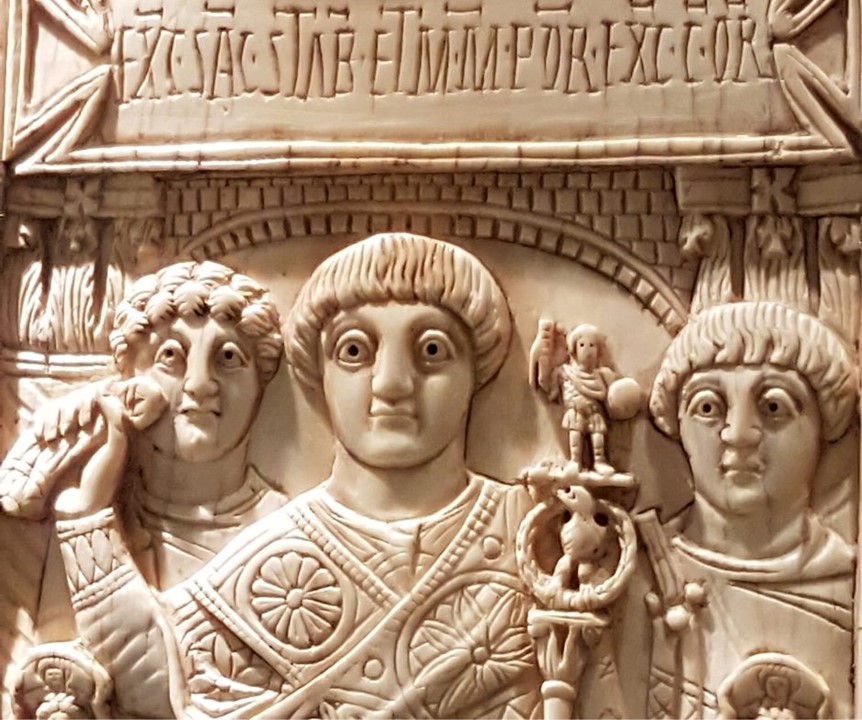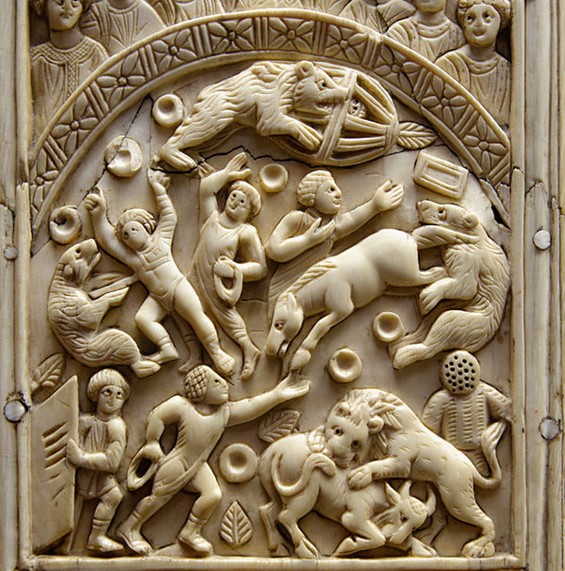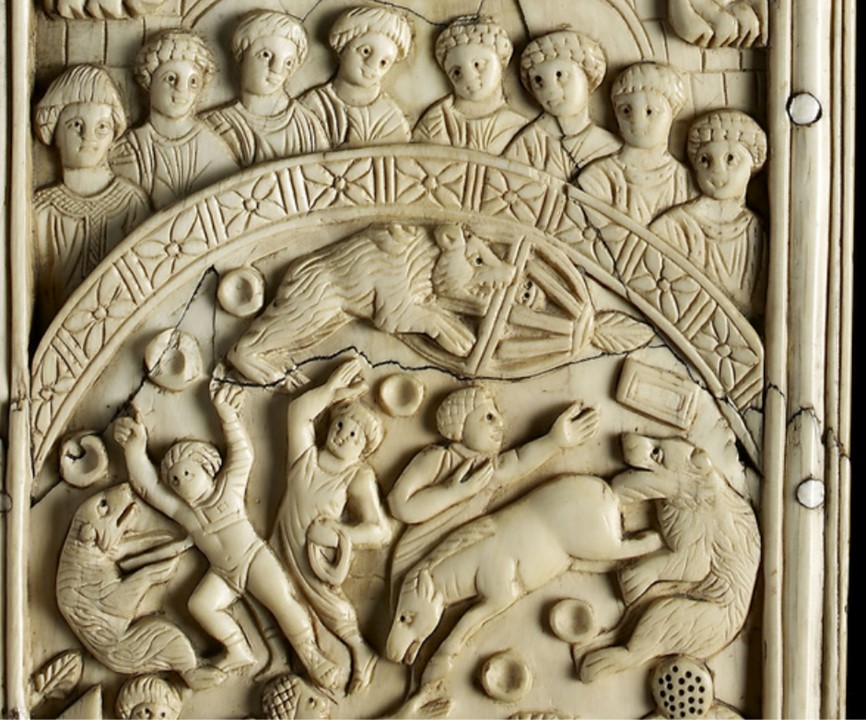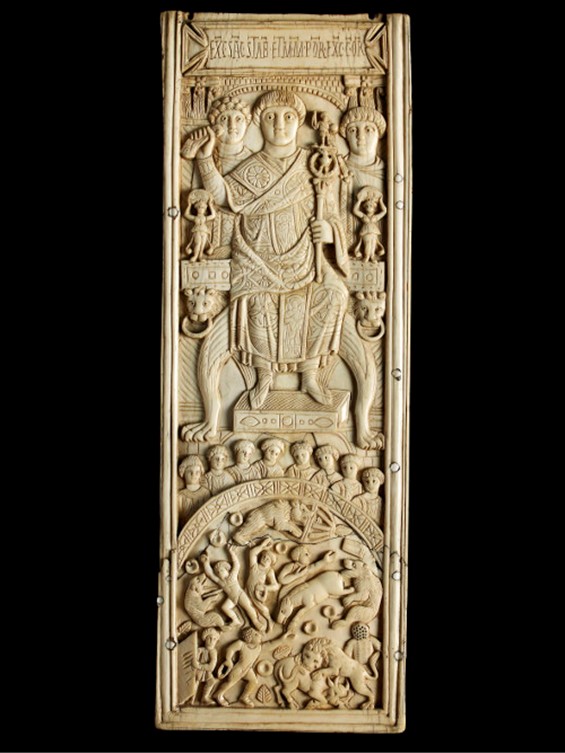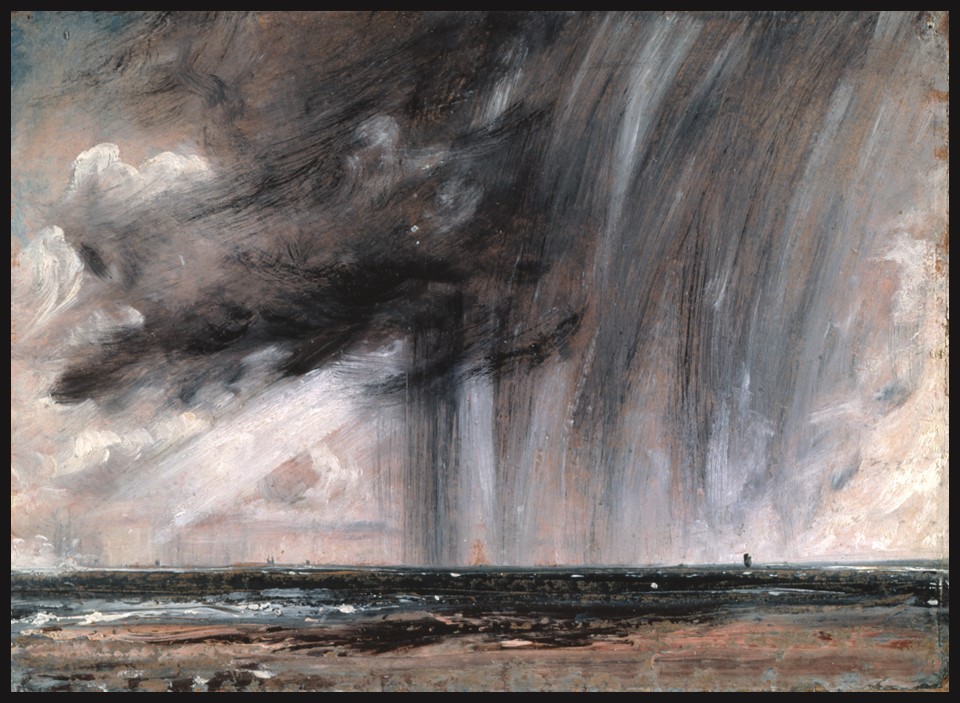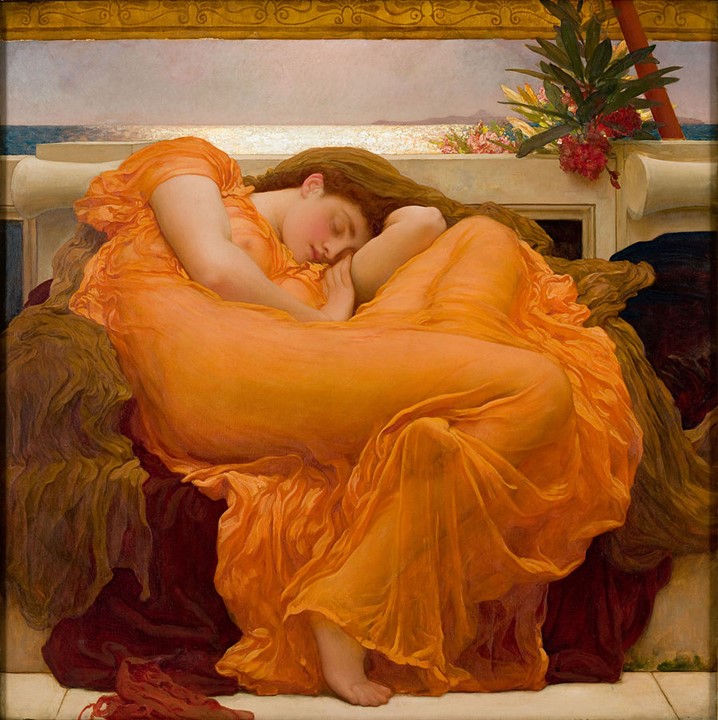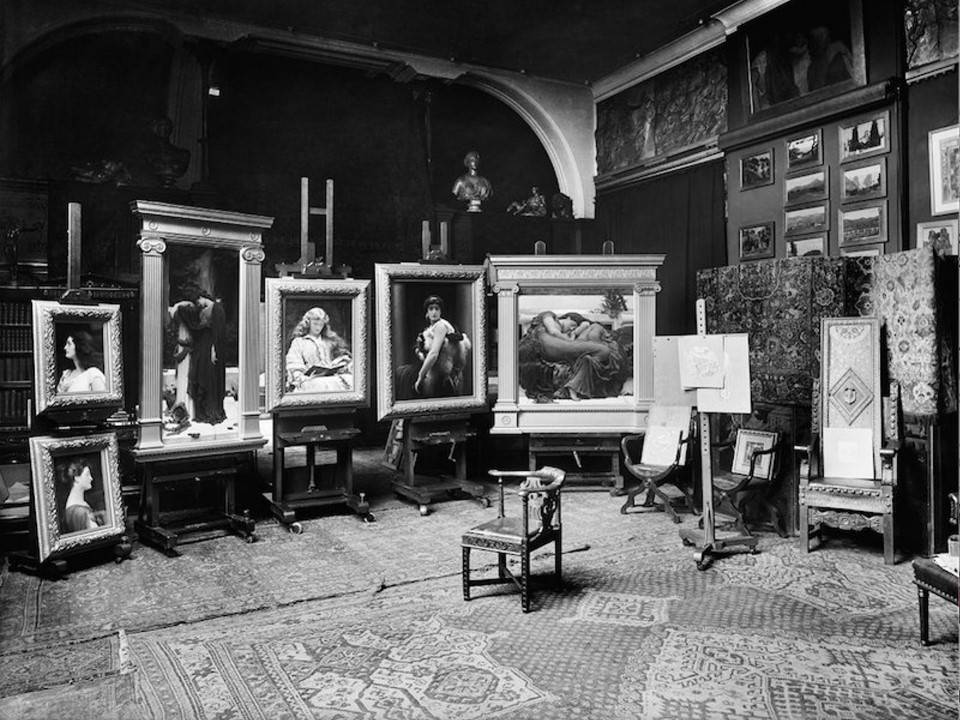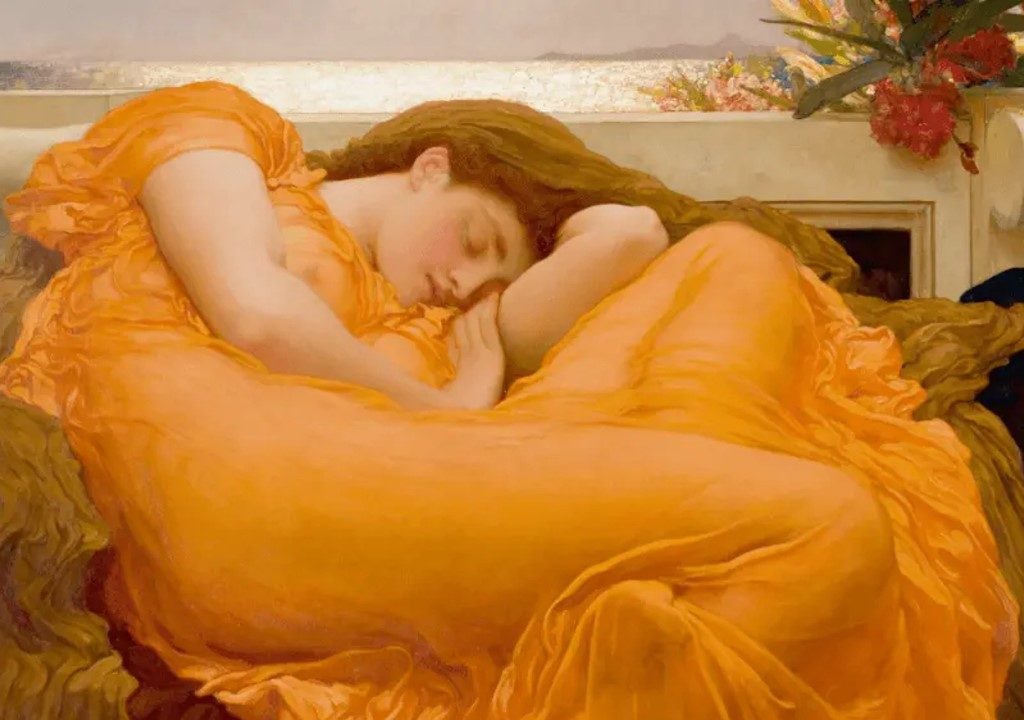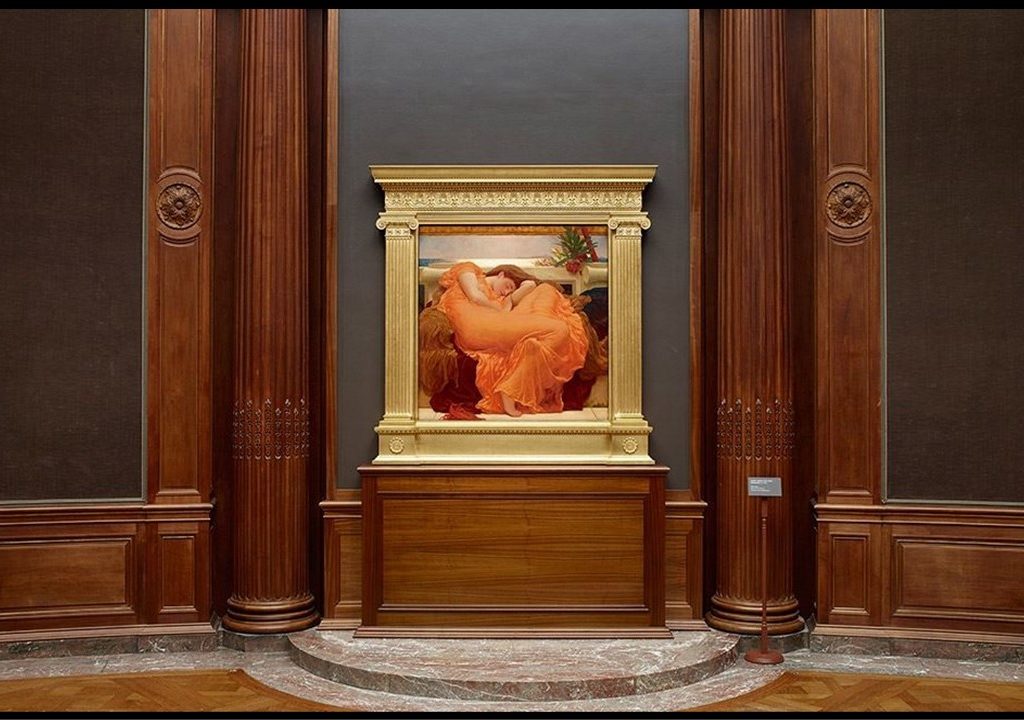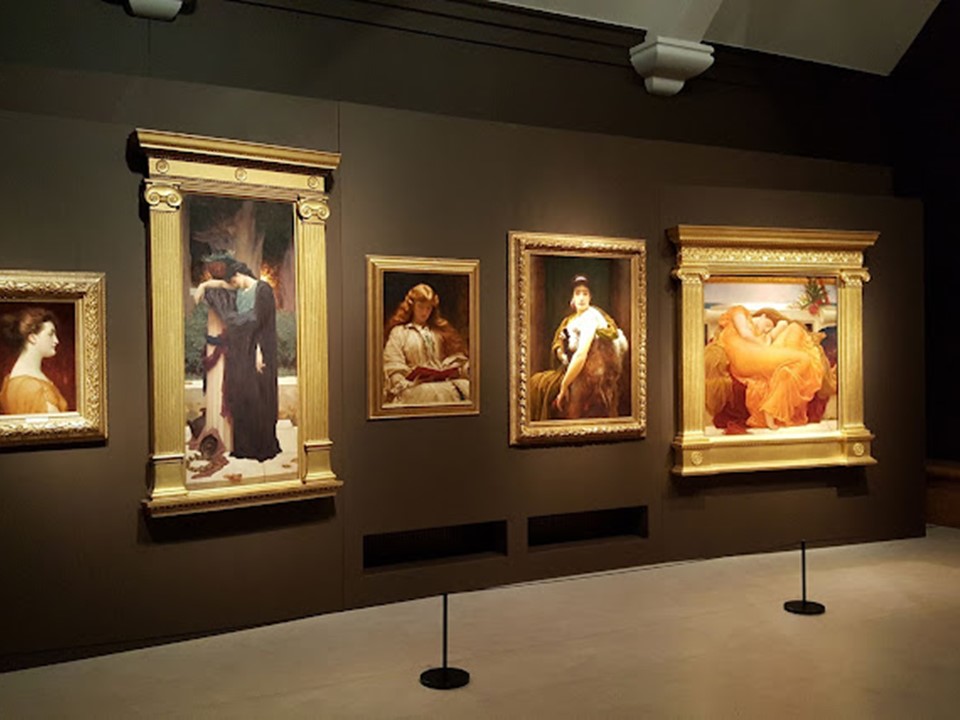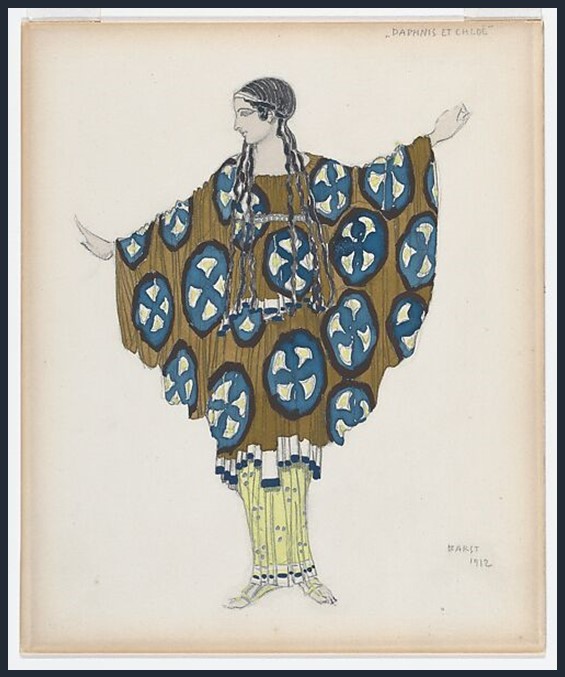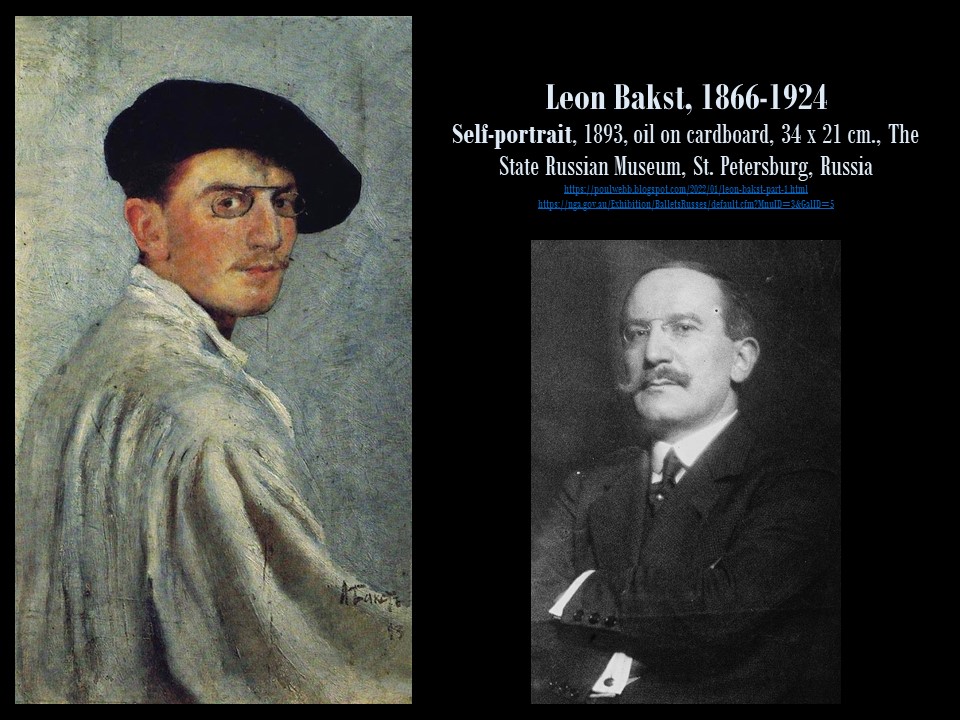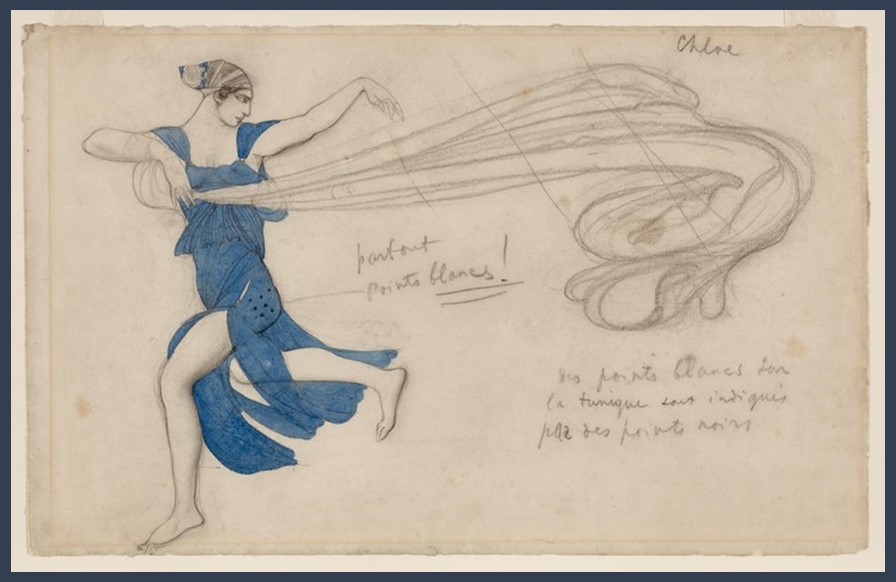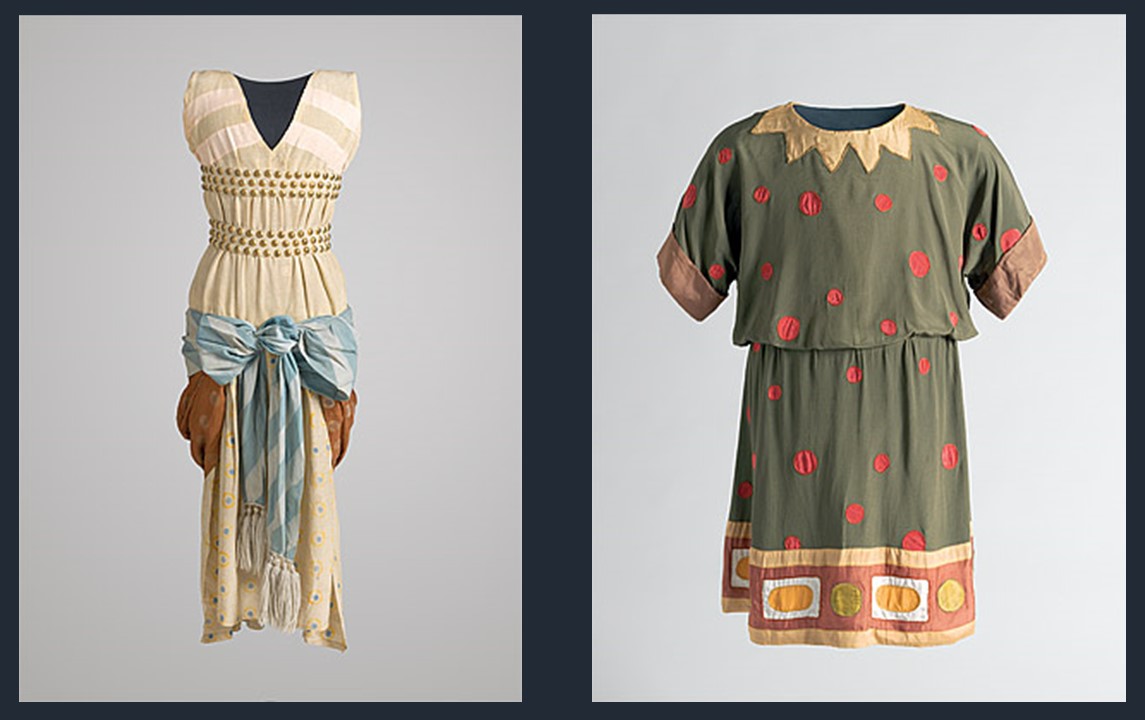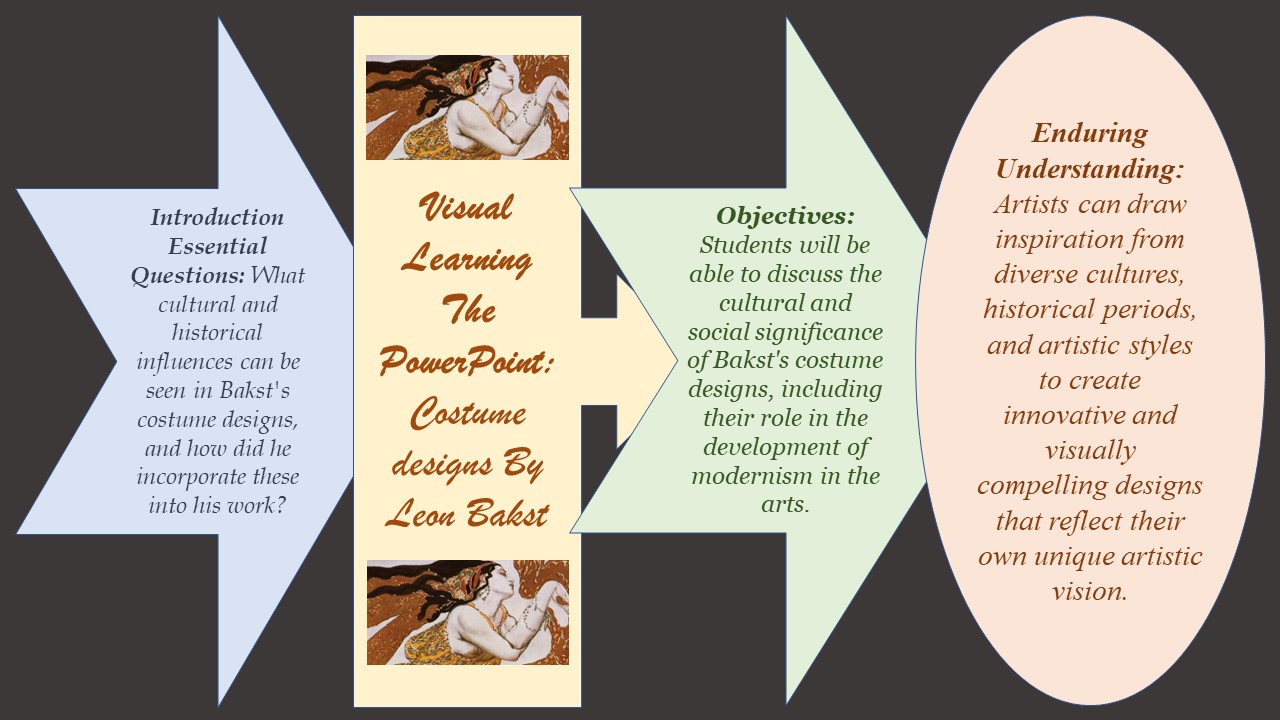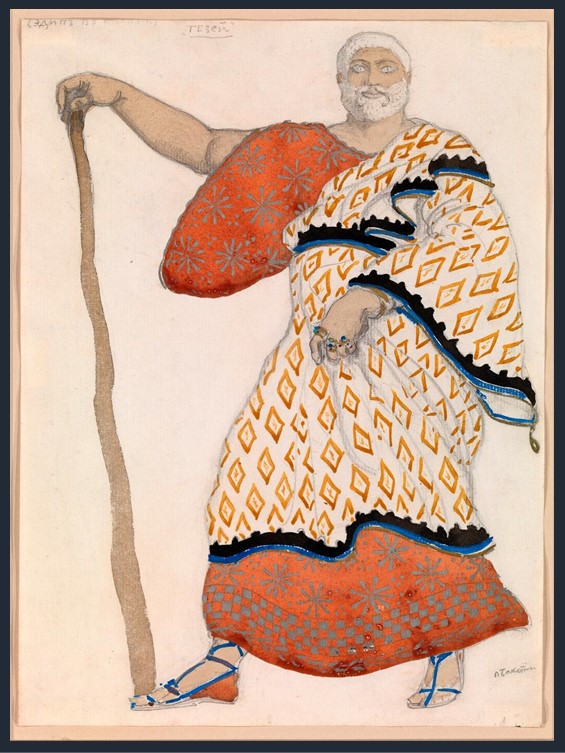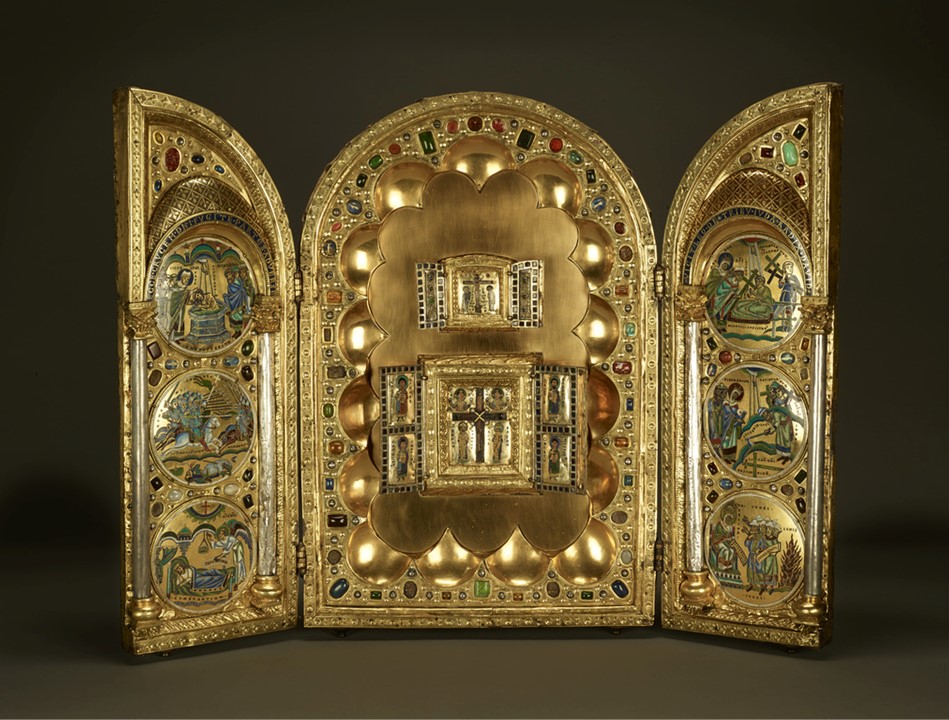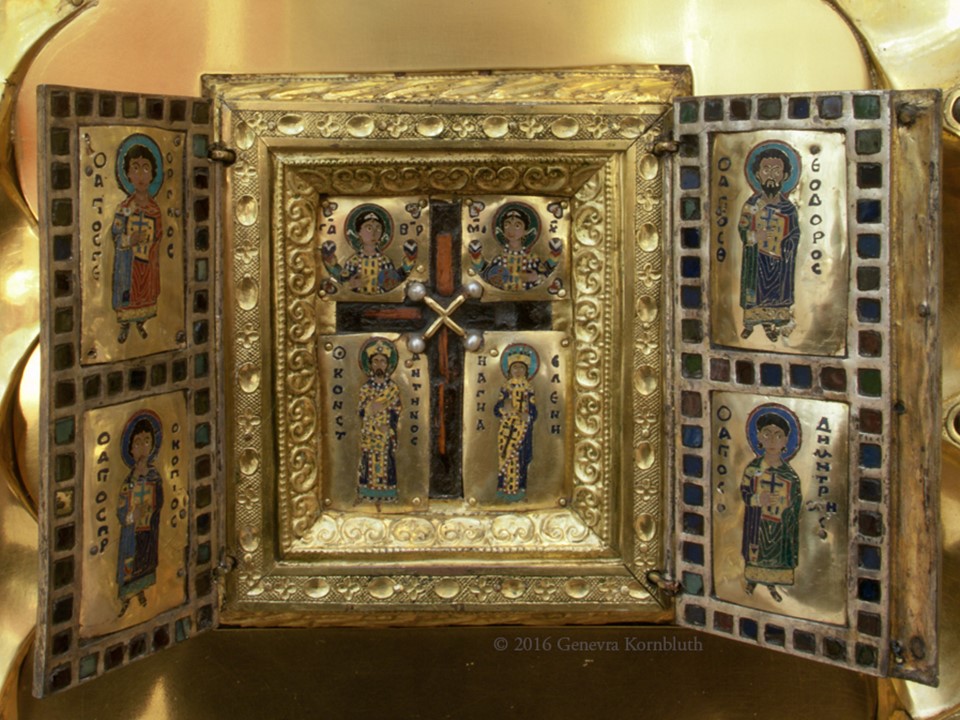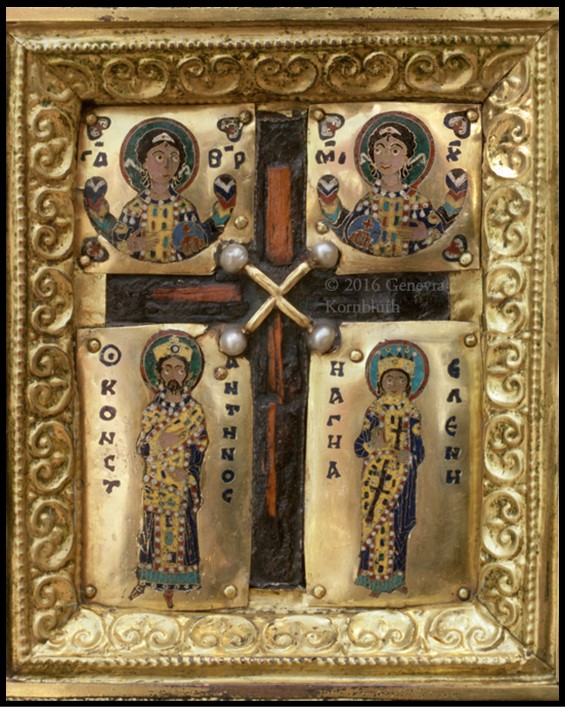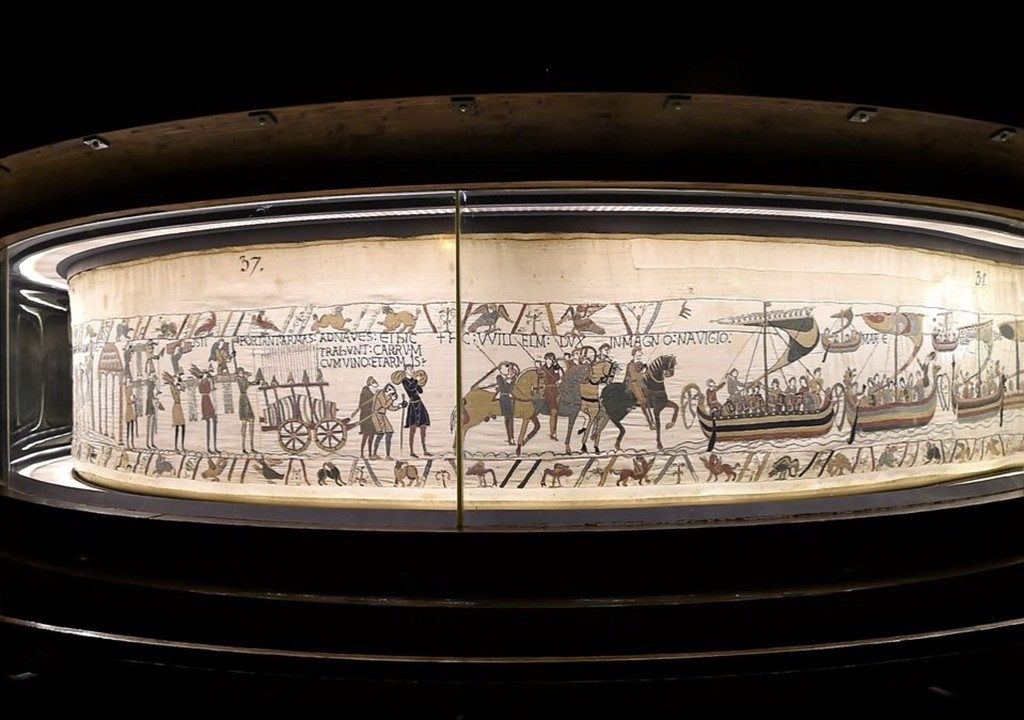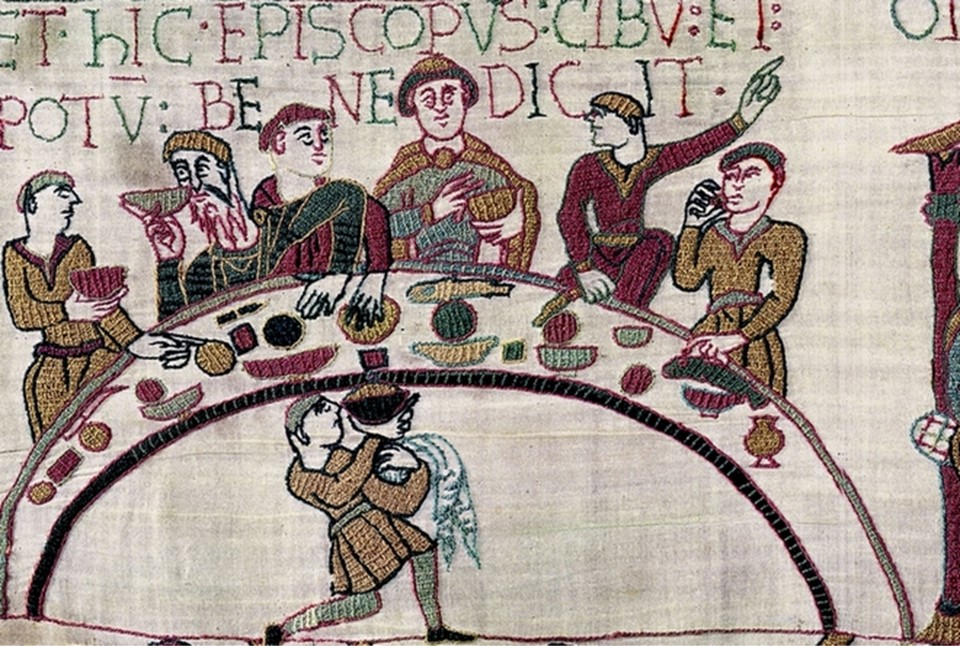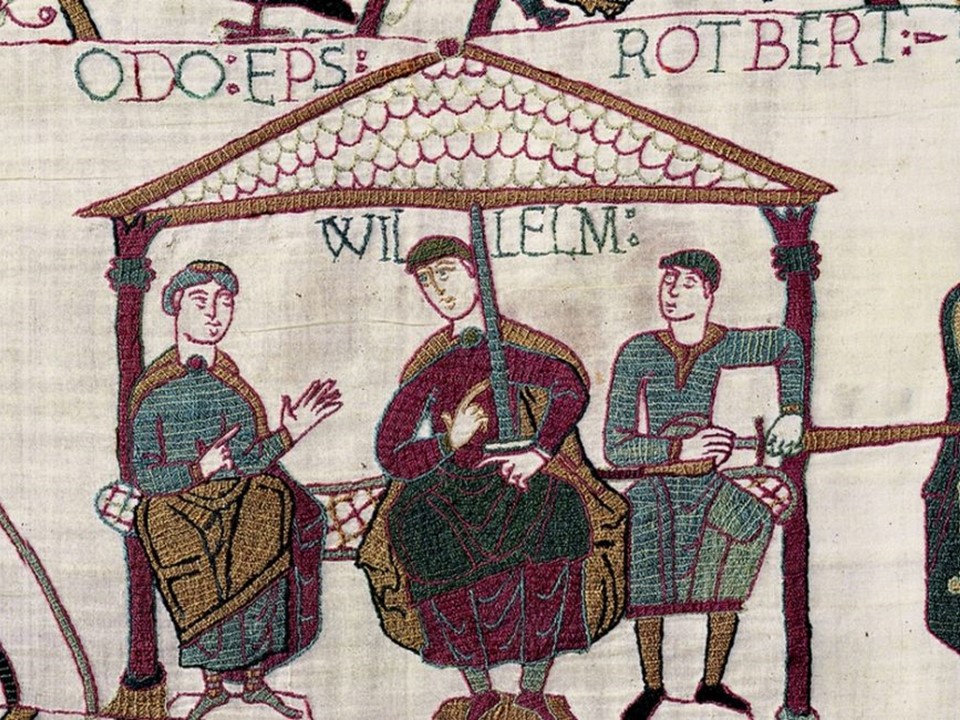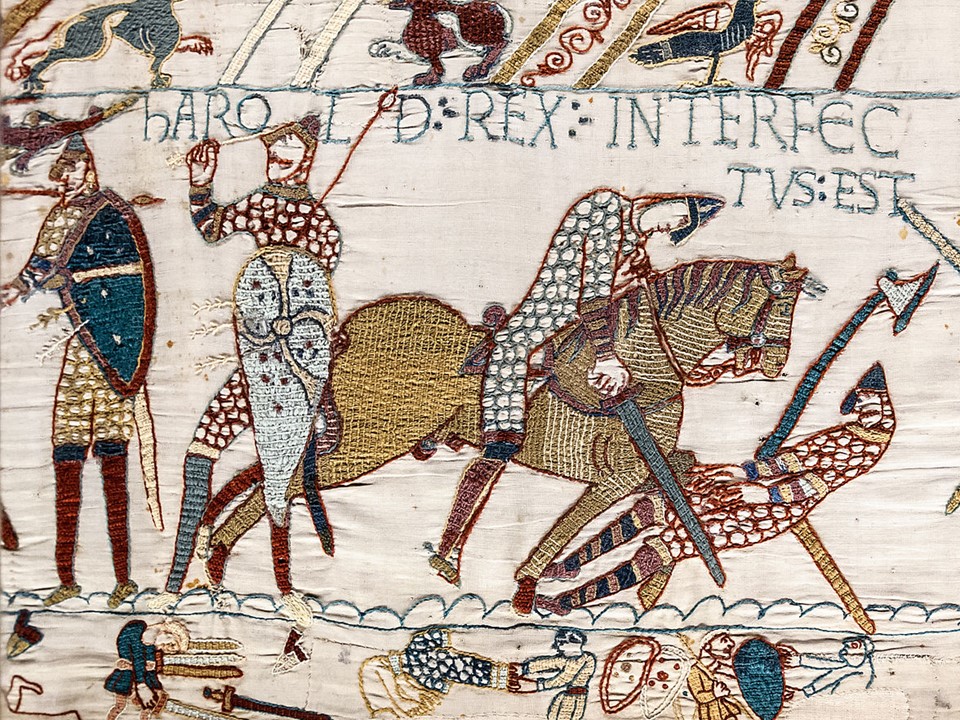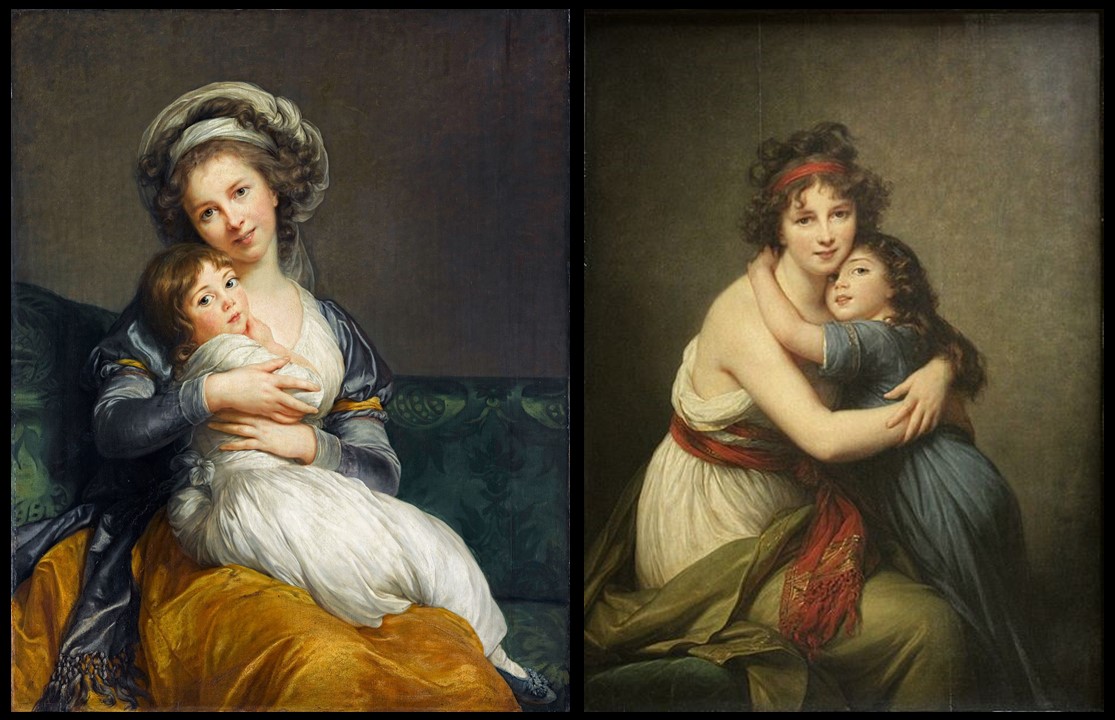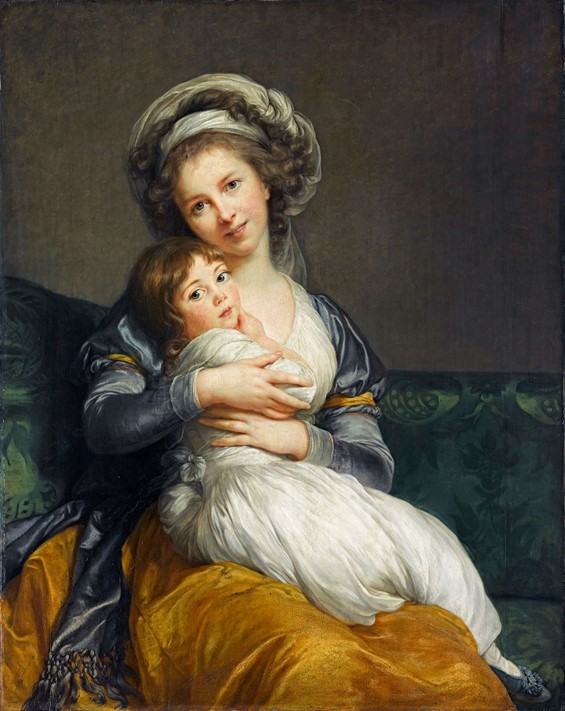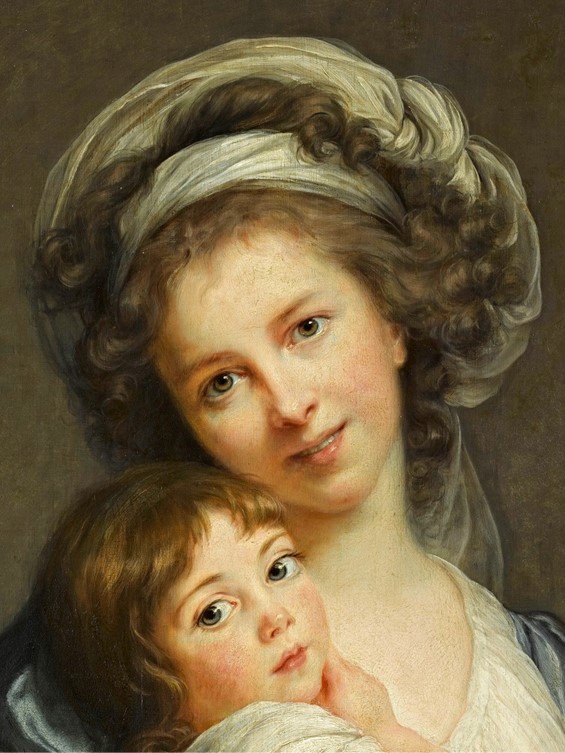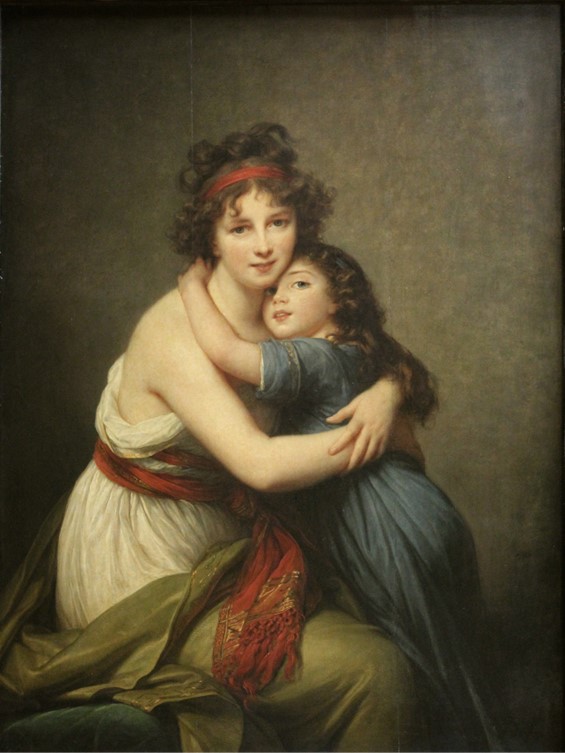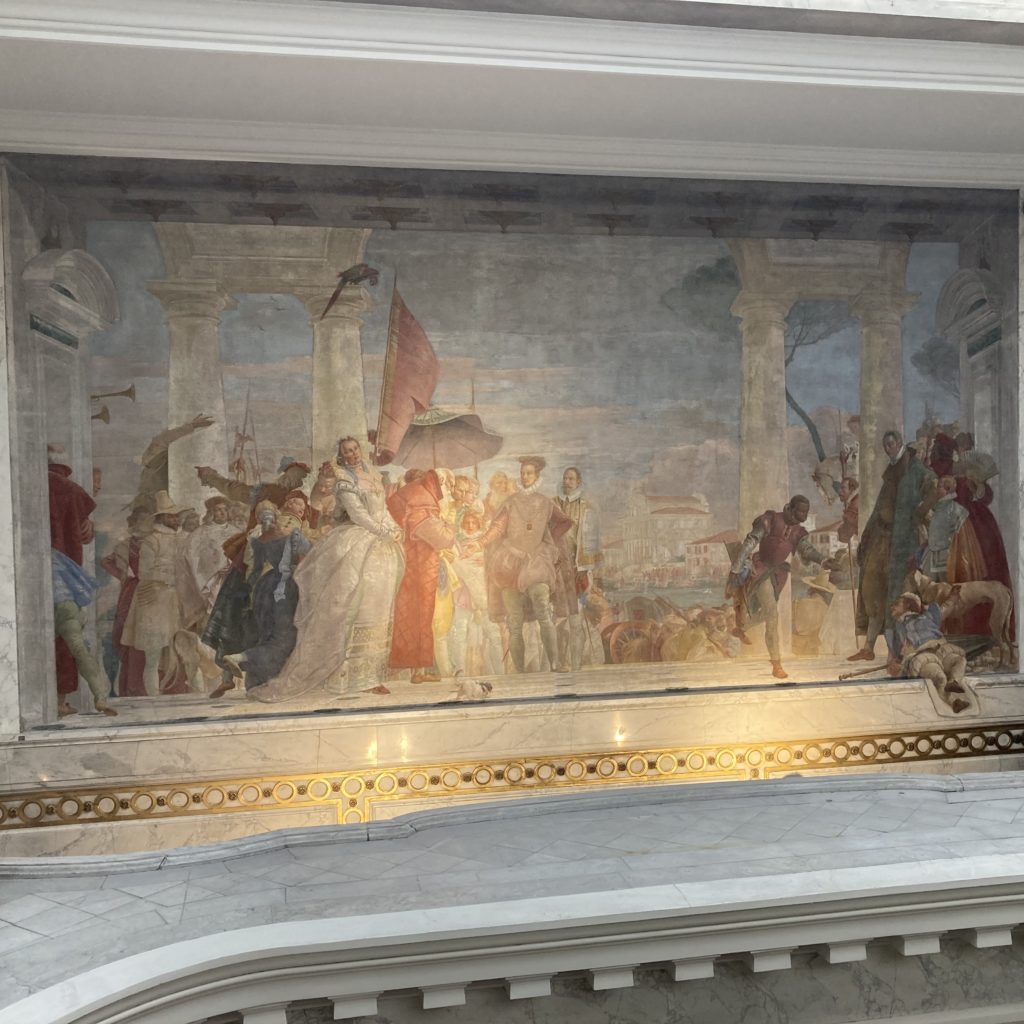
Henri III being Welcomed to the Contarini Villa, circa 1745, fresco mounted on canvas, 7,29 x 4,02 m, Musée Jacquemart-André, Paris, France (my amateurish attempt to Photography)
No other work by Tiepolo could be closer to our hearts, as it seems to have been created for us (the people of France). The last great Venetian painter and an episode in the history of France: is this not the finest possible blend of everything Venetian and French? This is how the fresco Henri III being Welcomed to the Contarini Villa, in Musée Jacquemart-André, Paris, was presented to the French public by the ‘librettist’ of the Gazette des Beaux-Arts in 1896. https://gallica.bnf.fr/ark:/12148/bpt6k203140w/f132.item (page 121-130) and https://www.musee-jacquemart-andre.com/en/works/henri-iii-being-welcomed-contarini-villa
Giambattista Tiepolo, also known as Giovanni Battista Tiepolo, is widely regarded as one of the greatest painters of the Rococo period. Tiepolo came from a family of artists, and he received his initial artistic training from his father, Giovanni Battista Tiepolo the Elder. Tiepolo’s talent and artistic abilities quickly gained recognition, leading to commissions for various decorative frescoes in palaces and churches across Europe. His works showcased his mastery of composition, grandeur, and a distinctive sense of lightness and elegance.
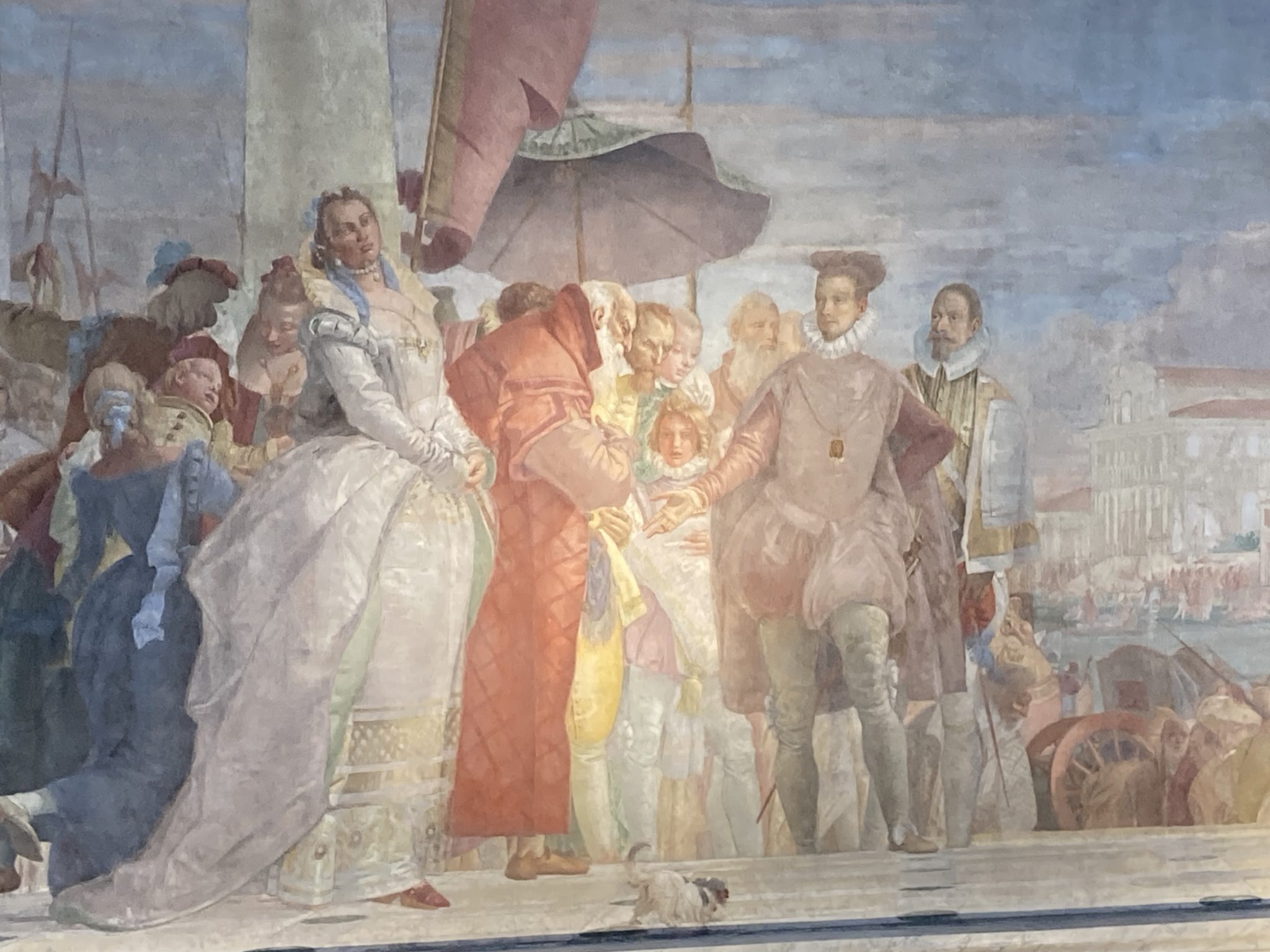
Henri III being Welcomed to the Contarini Villa (detail), circa 1745, fresco mounted on canvas, 7,29 x 4,02 m, Musée Jacquemart-André, Paris, France (my amateurish attempt to Photography)
Circa 1745 Tiepolo was commissioned to paint a historic event for the Contarini family, and specifically for Villa Contarini in Piazzola sul Brenta. Standing in the Veneto area, only a few kilometers from Padua and Vicenza, on the ruins of an ancient castle built by the Dente family around the year 1000, the Villa was a farmhouse up until the mid-17th century, when Federico Contarini, one of the procurators of San Marco, expanded the building, turning it into a palace. Villa Contarini reflects Palladio’s signature style, which is characterized by symmetry, proportion, and the grandeur of Venetian nobility. https://www.villacontarini.eu/presentation/?lang=en
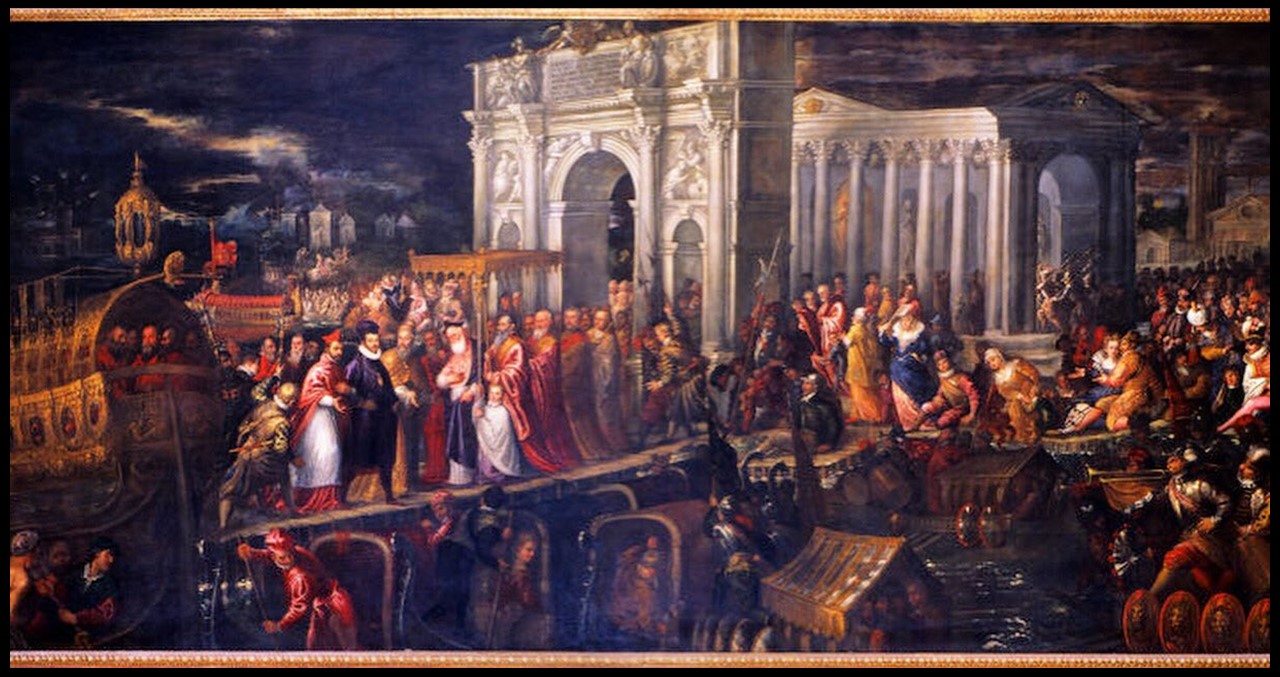
Entrance of King Henry III of France at San Nicolo al Lido, 1593, oil on canvas
400 x 810 cm, Sala delle Quattro Porte, Palazzo Ducale, Venice, Italy
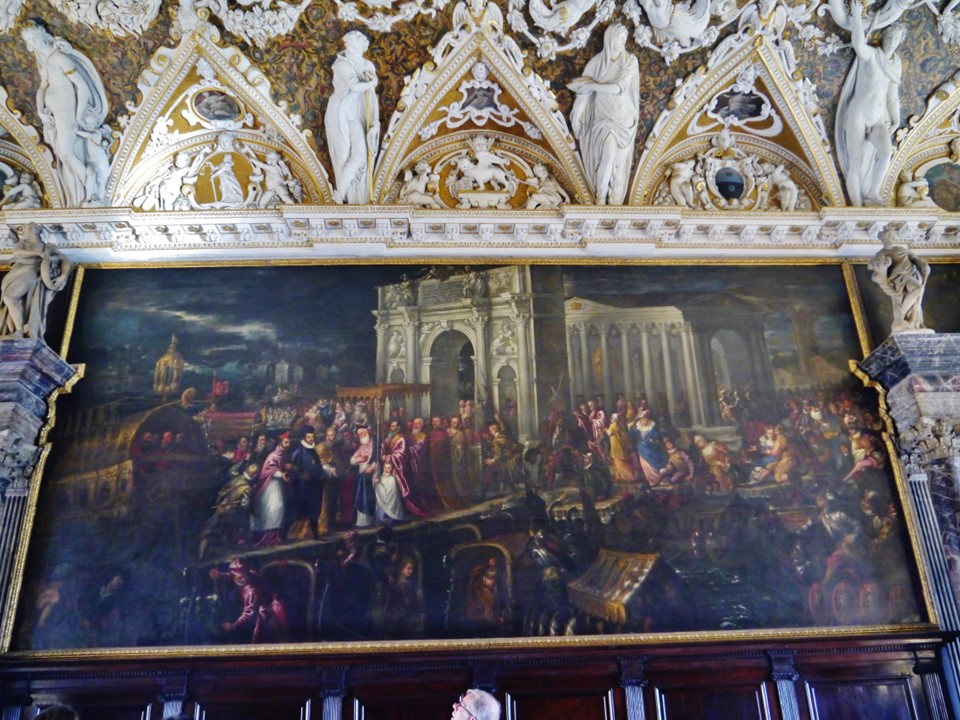
Entrance of King Henry III of France at San Nicolo al Lido, 1593, oil on canvas
400 x 810 cm, Sala delle Quattro Porte, Palazzo Ducale, Venice, Italy
Venetian grandeur was what Henri III of France experienced in 1574 while traveling from Poland to France in order to accept the French Crown. He arrived in Venice on 18 July 1574 and stayed in La Serenissima for ten days of official festivities and sightseeing. His host, Doge Alvise Contarini, welcomed him in front of the church of San Nicolò on the Lido for the day’s lavish reception, in front of a triumphal arch and an open loggia supported by ten Corinthian columns, designed by Andrea Palladio. The days that followed were dazzling with regattas, theatrical and musical performances, sightseeing, attendance of administrative events, phantasmagoric balls, and meetings with all members of Venice’s aristocracy and intelligentsia. https://www.christies.com/en/lot/lot-5529487
The day of his departure, Tuesday, the 27th of July, was equally grand. Henri III, accompanied by the Doge of Venice and all the members of the Venetian Senate, traveled up to Lissa-Fusine, where they bid farewell. The French Prince, soon to be King of France, was not left alone during his boat trip down the Brenta en route to Padua. He was still accompanied by ambassadors of La Serenissima, and Federico Contarini, a close relative of the Doge, who invited the Prince to visit the countryside Contarini Villa, for an impromptu stopover, probably the last lavish luncheon on Venetian soil. Henri III graciously accepted… and the rest is history, documented, two hundred years later, by Giambattista Tiepolo. https://gallica.bnf.fr/ark:/12148/bpt6k203140w/f132.item (pages 121-130)
Tiepolo’s style was characterized by vibrant colors, graceful figures, and dramatic, dynamic compositions. His brushwork displayed a remarkable sense of movement and fluidity, and his use of light and shadow added depth and dimension to his paintings. His fresco for Villa Contarini is a remarkable composition that showcases the artist’s style, his mastery of the fresco technique, and his ability to depict grand scenes with intricate details. The fresco depicts the historical event of Henri III being welcomed to the Contarini Villa by members of the influential Contarini family. The composition is visually captivating, with a dynamic arrangement of figures, a strong sense of movement, and attention to detail. The artist’s skillful brushwork and use of chiaroscuro contribute to the overall richness and realism of the fresco, while the intricate costumes and ornate accessories worn by the depicted figures reflect the fashion of the period. The fresco serves as a testament to Tiepolo’s technical prowess and his ability to capture historical events in a visually captivating and engaging manner.
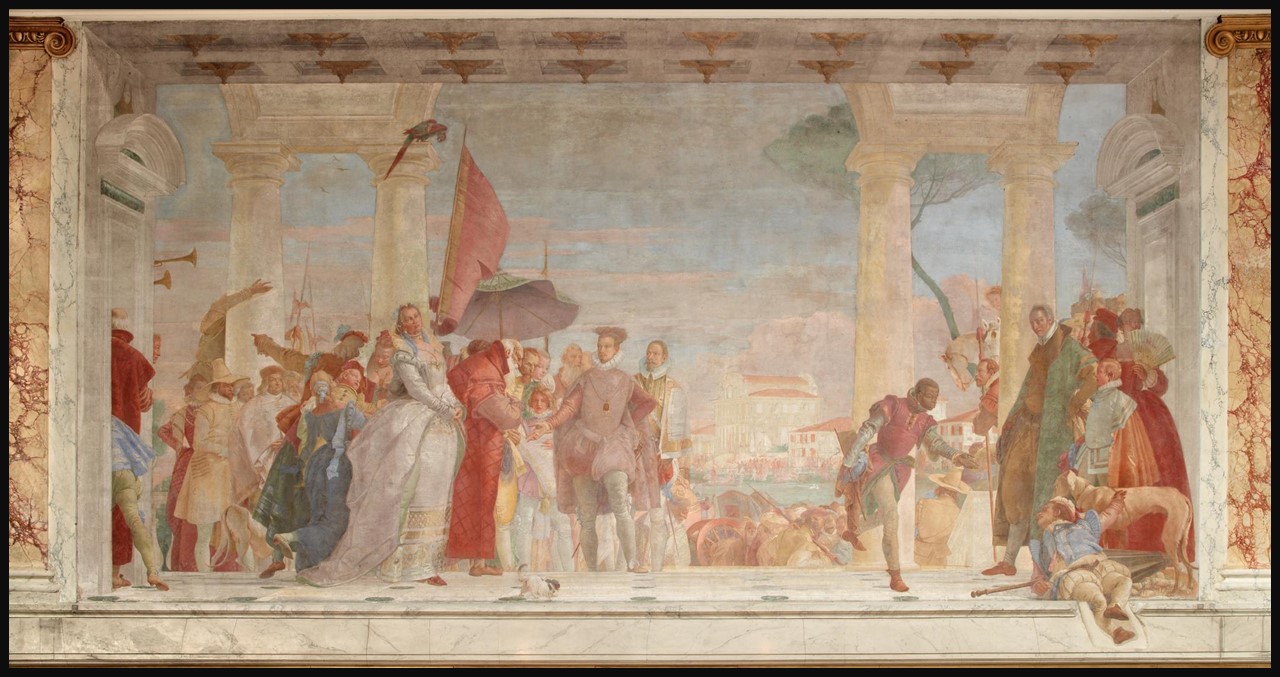
Henri III being Welcomed to the Contarini Villa, circa 1745, fresco mounted on canvas, 7,29 x 4,02 m, Musée Jacquemart-André, Paris, France
The amazing fresco Henri III being Welcomed to the Contarini Villa, is in Musée Jacquemart-André, in Paris. It is the Museum’s piece de resistance as it crowns the mansion’s spectacular Winter Garden. Edouard André and his wife Nélie Jacquemart, were great collectors of art. They bought the Tiepolo fresco in 1893, dismantled it, and transferred it from Veneto to their townhouse on the Boulevard Haussmann in Paris, the site of what today is the Musée Jacquemart-André.
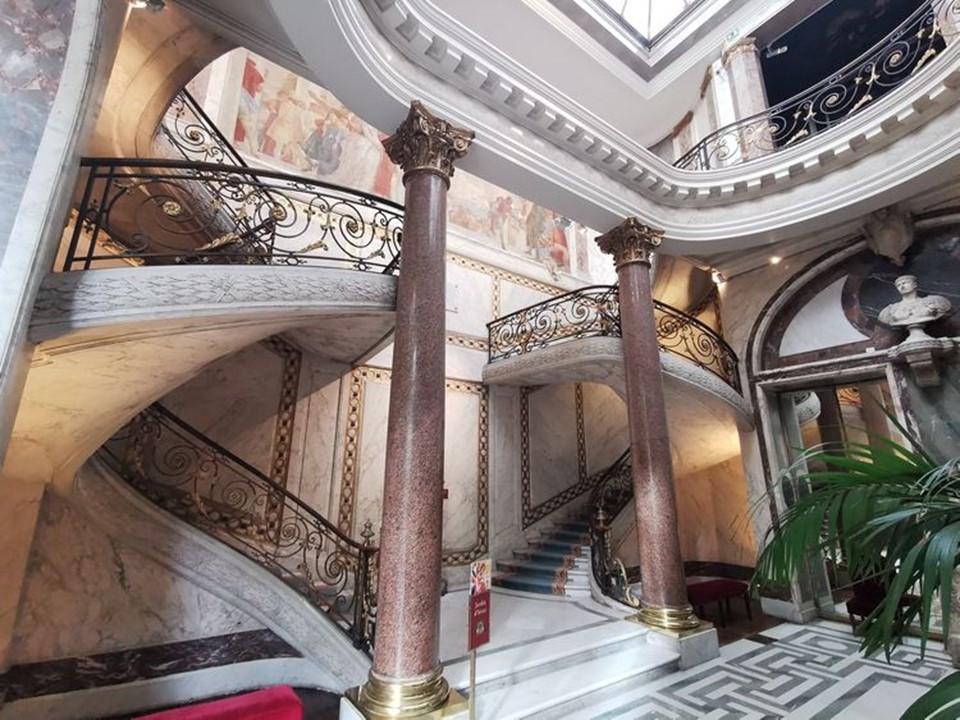
For a PowerPoint on Tiepolo’s oeuvre, please… Check HERE!
I enjoyed reading Diplomatic Gifts on Henri III’s Visit to Venice in 1574, by Evelyn Korsch, Nicola Imrie, Pamela J. Warner, Evelyn Korsch, Studies in the Decorative Arts, Vol. 15, No. 1 (Fall-Winter 2007–2008), pp. 83-113 (31 pages) https://www.jstor.org/stable/10.1086/652845?read-now=1#page_scan_tab_contents
The short Video, titled, TIEPOLO au musée Jacquemart-André, by Patricia Carles, is also interesting to watch… https://www.youtube.com/watch?v=LwxPvWPEVTk
Photo Credits: https://twitter.com/prattinvenice/status/1352194531098308609 and https://www.musee-jacquemart-andre.com/en/works/henri-iii-being-welcomed-contarini-villa and https://upload.wikimedia.org/wikipedia/commons/c/c7/Venezia_Palazzo_Ducale_Innen_Sala_delle_Quattro_Porte_Gem%C3%A4lde.jpg and https://www.cparti.fr/description.html?id=118
